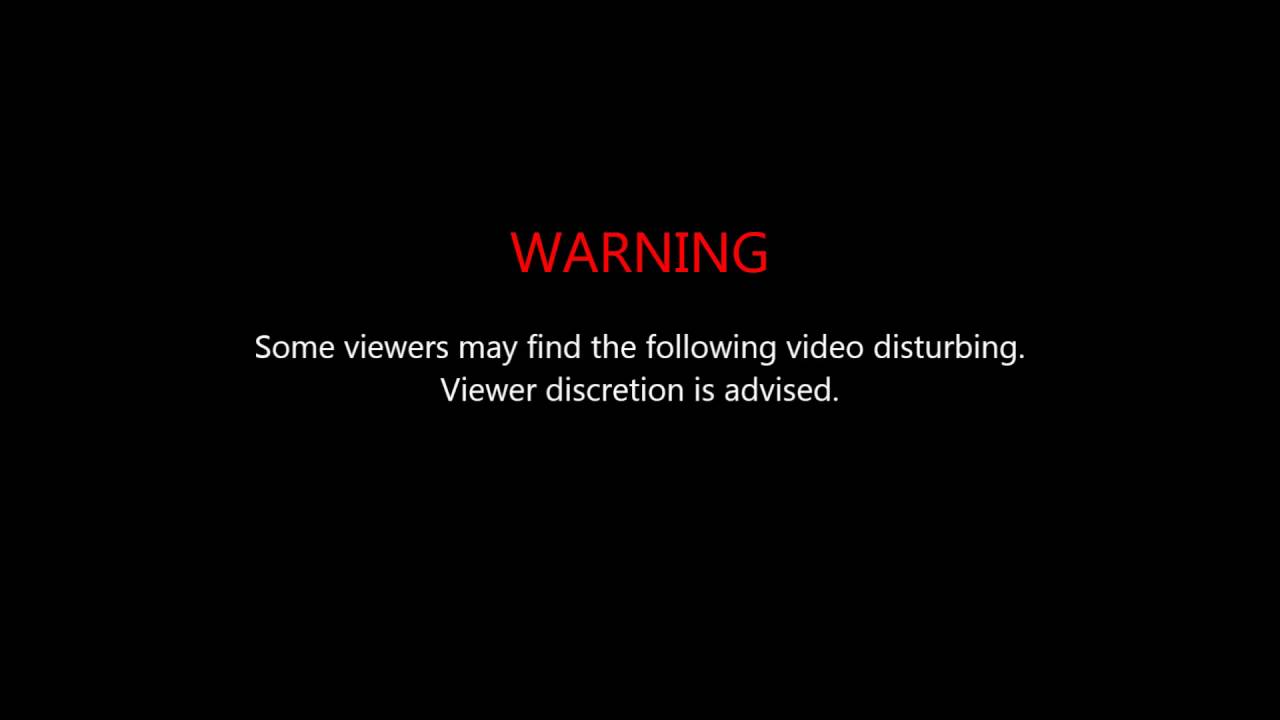In the digital age, content creators have a responsibility to ensure their audiences are well-informed about what they're engaging with. One essential tool for achieving this is the Viewer Discretion Warning. This simple yet effective message can help protect viewers from potentially distressing or sensitive content. In this blog post, we'll dive into the significance of these warnings and how you can effectively incorporate them into your YouTube videos.
Understanding Viewer Discretion Warnings

Viewer Discretion Warnings (VDWs) serve as a heads-up for audiences, alerting them to content that may be disturbing, graphic, or unsuitable for certain viewers. They can cover a wide range of topics, including:
- Violence: Footage that includes graphic violence or intense confrontations.
- Strong Language: Content featuring profanity or offensive language.
- Sexual Content: Any material that includes sexual situations or nudity.
- Substance Abuse: Discussion or depiction of drug use or alcohol abuse.
- Mental Health Issues: Topics that may trigger anxiety or distress related to mental health.
Including a VDW not only informs your audience but also shows that you care about their viewing experience. It’s crucial because:
- Respect for Your Audience: A warning signifies that you respect your viewers' comfort levels and emotional well-being.
- Building Trust: By being upfront about your content, you foster trust with your audience, encouraging them to return to your channel.
- Compliance with Community Guidelines: Many platforms, including YouTube, have guidelines regarding sensitive content. VDWs help align your content with these standards.
Incorporating Viewer Discretion Warnings can be seamlessly done at the beginning of your videos or even within the description box. Just a few seconds of acknowledgement can make a world of difference for viewers who might be sensitive to the content you’re sharing!
Also Read This: A Touch of Frost Episodes on YouTube: Where to Watch the Classic British Show
Importance of Adding Warnings
In today’s digital landscape, the importance of adding viewer discretion warnings to your YouTube videos cannot be overstated. These warnings serve as a crucial tool for creators to ensure their content is consumed responsibly. Here’s why they matter:
- Protecting Your Audience: Viewer discretion warnings help inform audiences about potentially sensitive or triggering content. This is especially important for topics like mental health, violence, or graphic imagery, where viewers may have varying thresholds for distress.
- Building Trust: By being upfront about the content, you build trust with your audience. They appreciate transparency and are more likely to return to your channel if they feel respected and valued.
- Legal and Ethical Responsibility: Adding warnings can also shield creators from potential backlash or legal issues. By warning viewers, you demonstrate a commitment to ethical content creation, which is vital in today’s scrutinizing environment.
- Enhancing Engagement: When viewers are prepared for what they will see, they can engage with the content more thoughtfully. This leads to deeper discussions and more meaningful interactions in the comments section.
In short, viewer discretion warnings are not just a formality; they are essential for fostering a safe and respectful viewing environment.
Also Read This: How to Save Shorts on YouTube for Offline Viewing
How to Create Effective Warnings
Creating effective viewer discretion warnings is about clarity, brevity, and consideration. Here are some steps to ensure your warnings resonate:
- Be Specific: Clearly state what the warning pertains to. Instead of saying “may contain sensitive content,” specify if it includes violence, sexual content, or disturbing imagery.
- Use Visuals: Consider adding a graphic or text overlay at the beginning of your video. This catches the viewer's attention immediately.
- Keep it Brief: Your warning should be straightforward and concise. Aim for one or two sentences that communicate the necessary information without overwhelming viewers.
- Place it Strategically: The beginning of the video is the ideal spot for warnings. However, for longer videos, consider reminders at key moments if the content shifts dramatically.
Here’s an example of an effective warning:
| Warning Type | Example Text |
|---|---|
| Graphic Content | Viewer Discretion Advised: This video contains graphic images that may be disturbing to some viewers. |
| Mature Themes | Viewer Discretion Advised: This video discusses mature themes, including substance abuse and mental health issues. |
By following these guidelines, you can create warnings that effectively prepare your audience for what they are about to see, promoting a more positive viewing experience.
Also Read This: How to Stop YouTube Ads on Android Devices: Easy Methods
5. Steps to Add Warnings in YouTube Studio
Adding viewer discretion warnings to your YouTube videos is a straightforward process, but it’s essential to do it correctly to ensure your audience is adequately informed. Here’s a step-by-step guide to help you through this:
- Sign in to YouTube Studio: Go to YouTube Studio and log in using your credentials.
- Select Your Video: In the left-hand menu, click on “Content.” This will show you all your uploaded videos. Find the video you wish to add a warning to and click on it.
- Edit Video Details: Once you’re on the video details page, look for the “Description” box. This is where you’ll add your viewer discretion warning.
- Add the Warning: In the description, write your warning clearly. For example, “Viewer discretion is advised due to graphic content.” You might also want to use bold text to make it stand out: Viewer discretion is advised due to graphic content.
- Save Changes: Don’t forget to click the “Save” button in the upper right corner to apply your changes.
That's it! Your viewers will now see the warning when they check out your video, helping them make informed choices about what they watch.
Also Read This: How Much Is 40 Million Views on YouTube Worth? A Revenue Analysis
6. Best Practices for Viewer Discretion Warnings
Implementing viewer discretion warnings is more than just a good practice; it’s a responsibility to your audience. Here are some best practices to consider when adding these warnings:
- Be Clear and Specific: Always specify what the warning is for. Instead of just saying “Viewer discretion is advised,” detail what might be disturbing, such as “Contains scenes of violence and strong language.”
- Positioning Matters: Place the warning at the beginning of your video and also in the description to ensure it’s seen. You might also consider adding it as a text overlay in the first few seconds of the video.
- Use Visual Cues: A well-designed graphic or overlay can grab attention. Consider using color or icons to emphasize the warning visually.
- Monitor Feedback: Pay attention to viewer comments regarding the content. If you notice a pattern of discomfort, it might indicate that your warnings need to be adjusted.
- Stay Updated: As content trends and sensitivities evolve, regularly revisit and adjust your warnings to remain relevant and clear.
By following these best practices, you’ll not only protect your audience but also foster a more understanding community around your content.
Adding Viewer Discretion Warnings to Your YouTube Videos
Creating content on YouTube comes with a responsibility to your audience. One crucial aspect of this is ensuring that viewers are aware of potentially sensitive content. Adding viewer discretion warnings can help prepare your audience for what they are about to see, making the viewing experience more comfortable and considerate. Here’s a comprehensive guide on how to effectively implement these warnings in your videos.
Why Viewer Discretion Warnings Matter:
- Protect Vulnerable Audiences: Certain topics can be triggering for individuals, such as mental health issues, violence, or substance abuse.
- Maintain Trust: Transparency about content can build credibility and loyalty among your viewers.
- Comply with Guidelines: YouTube encourages creators to flag sensitive content, which can aid in moderation and community standards.
How to Add a Viewer Discretion Warning:
- Start with a Clear Message: Use simple language to communicate the nature of the content.
- Position the Warning: Place the warning at the beginning of the video or in the video description.
- Use Visuals: Consider adding a graphic overlay or text at the start of your video.
Sample Warning Text:
"Viewer discretion is advised. This video contains discussions of sensitive topics such as [insert topics]. Please proceed with caution."
Conclusion: By incorporating viewer discretion warnings into your YouTube videos, you not only enhance viewer safety but also foster a deeper connection with your audience, demonstrating sensitivity and awareness of their needs.
 admin
admin








